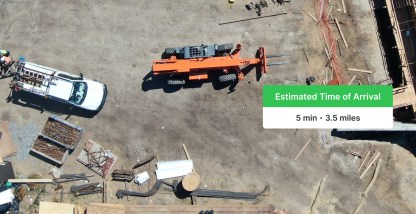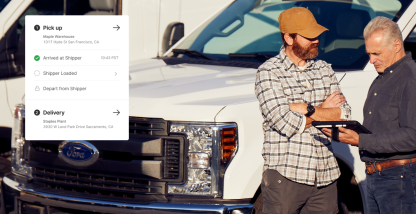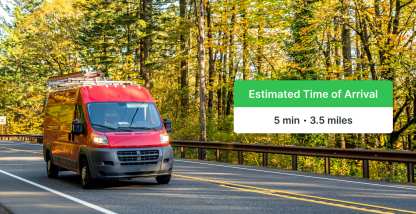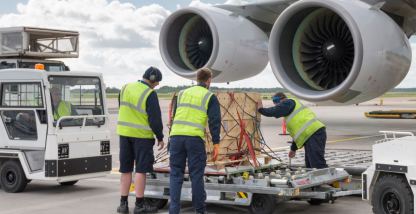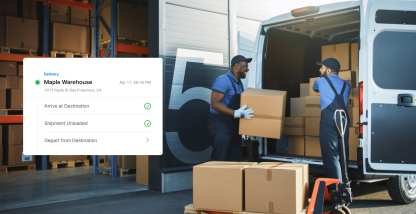Contactless delivery became a norm as a result of the COVID-19 pandemic. Enterprises looking to limit physical contact and keep customers and employees safe moved to offer no-contact delivery. Contactless delivery service works differently, but it can offer many benefits, especially when companies leverage software to meet their delivery needs.
What is contactless delivery?
Contactless services are everywhere today, but it used to be a service only provided by e-commerce shippers. However, many brick-and-mortar businesses had to switch to contactless delivery to keep their doors open during the pandemic. Now, customers can get a contactless pizza delivered to their homes without even opening their door to a driver. After experiencing the convenience of contactless delivery, customers’ desire for this physically distant approach doesn’t look to be waning.
How does contactless delivery work?
Contactless delivery is the practice of providing a product with limited or no contact between the delivering party and the customer. Take the many food delivery and meal prep companies popular today. Drivers can leave orders on the recipient’s doorstep and notify them by text or by ringing a doorbell, without any in-person interaction.
Essentially, the customer places an order and selects “contactless delivery.” They complete the payment and the business makes arrangements to deliver that product or good to the customer without interacting with the delivery driver.
Of course, there are some goods that can’t be easily delivered without contact. These include alcohol, prescription drugs, or items that require identity or age confirmation. Yet a business may be able to digitize the validation process to enable no-contact deliveries. For instance, CVS recently teamed up with UPS to use drones to deliver prescriptions to a Florida retirement community.
What does contactless delivery mean for commercial fleets and drivers?
That it’s time to go digital if you haven’t already. Fleet automation software makes contactless delivery attainable for commercial trucking companies. Automation helps businesses communicate throughout delivery while minimizing interaction among drivers, dispatch, and others.
The fleet can also ensure proper driver safety when doing contactless deliveries by:
- Requiring appropriate personal protective equipment (PPE) such as gloves and mask.
- Educating drivers about how to wear the PPE properly. The mask should cover both mouth and nose, and gloves should cover both wrists.
- Storing hand sanitizer on delivery trucks and recommending its regular use.
- Doing temperature checks of all drivers before they work a route.
- Keeping fulfillment centers disinfected and at a high level of cleanliness.
- Encouraging social distancing among employees and within areas where drivers meet or congregate.
Benefits of contactless deliveries
Non-contact delivery offers several advantages for everyone involved. Top benefits of contactless delivery include:
- Business survival. During the pandemic, providing a contactless delivery option was the only way many organizations could continue to do business. Today, no-contact delivery remains a differentiator that can help grow a customer base and profitability.
- Convenience. Customers like the option of contactless delivery, especially when it means they don’t have to be available and onsite for the arrival of their products or goods. Many customers prefer this option as long as you can keep them updated.
- Safety. Your customers and employees face a reduced risk of virus spread when you minimize in-person interactions. Plus, employees see you care, and your business benefits from avoiding the disruption of employee sick days.
- Brand loyalty improves. By going digital to inform customers about their deliveries and offering contactless delivery, you’re able to offer a more satisfying customer experience.
- Reduced touch points. Transactions for contactless delivery take place online, via web or in an app, or people may pre-pay by phone. Online transactions make payment processing safer and faster, and are particularly appealing to younger generations.
Is contactless delivery here to stay?
Even with the increase in immunization levels and sanitization measures, many businesses are finding demand for contactless delivery remains. Customers find it convenient, and that’s a big driver of purchasing behaviors.
Enterprises such as Amazon and Domino’s are among those examining new ways to offer contactless delivery, including via robot, drone, and even parachute. In our digital society, the continuation of contactless delivery seems inevitable.
Challenges associated with non-contact delivery
Contactless deliveries offer many advantages for the business, its employees, and its customers. Still, it further complicates the already difficult last-mile delivery. Some challenges to address include:
- Customers not being aware the delivery has been made.
- Deliveries being made to the wrong location.
- Disputes about whether the deliveries were actually received.
Any of these challenges can mean a lot of back-and-forth between the customer, sender, and your company. With a delivery software solution, your business can more easily avoid or deal with these issues.
Learn how fleet management software benefits field service and construction fleets too.
Features to look for in enterprise contactless delivery software
Contactless delivery software has many features that can help manage your delivery system and improve communication between the office, drivers, and customers. It’s best to look for a solution that offers:
- Automated notifications. A system that lets you set up automatic notifications (sent via SMS text or email) can help fleet managers, drivers, and customers all stay in the know.
- GPS tracking. Fleet managers can keep tabs on where their vehicles are and ensure deliveries are run more smoothly. GPS tracking also supports automated notifications as they can be triggered by geofencing.
- Route optimization. Drawing on data about routes, traffic and weather conditions, and information about delivery site drop-off windows can help simplify route planning.
- Driver app. Offer drivers an intuitive app that lets them see customer delivery instructions, submit photos of the completed delivery, and send messages to the back office. An app that helps drivers monitor vehicle health and Hours of Service compliance also helps whether or not the delivery is no-contact.
Read our route planning tips to enhance your contactless and other delivery services.
How Motive’s software supports contactless services
Motive’s delivery management software improves your margins and supports your contactless service offerings. Anyone with a mobile or desktop device can access our clean, easy-to-use interface to manage your fleet and streamline your business.
With Motive connecting your offices, drivers, and vehicles, you can optimize routing to find the shortest, most efficient routes — saving you time and fuel while ensuring productivity. GPS tracking also keeps fleet managers aware of where assets are and whether they’re on schedule. On-time delivery metrics can help your planning and inform communications with customers about when to expect arrival.
The automation of the delivery process also means everything is captured and documented online. This makes delivery validation easier, minimizes back-and-forth with customers, and makes quality assurance and compliance control simpler.
Motive’s all-in-one technology can also provide you with the data needed to keep your fleet healthy with predictive maintenance. Improve your uptime with an always-on fleet available to provide that next contactless delivery drop.
Request a free demo to learn more how Motive’s all-in-one fleet management solution can help your business.





